Lung cancer incidence decreases with elevation: evidence for oxygen as an inhaled carcinogen
Daniel Himmelstein
Kamen Simeonov
March 16, 2015
iPQB Journal Club
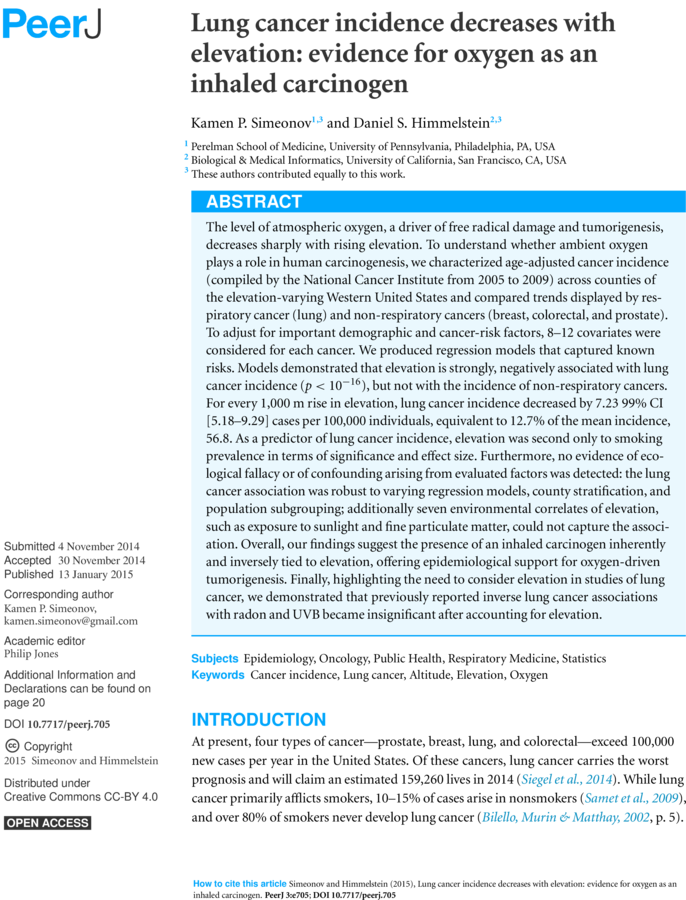
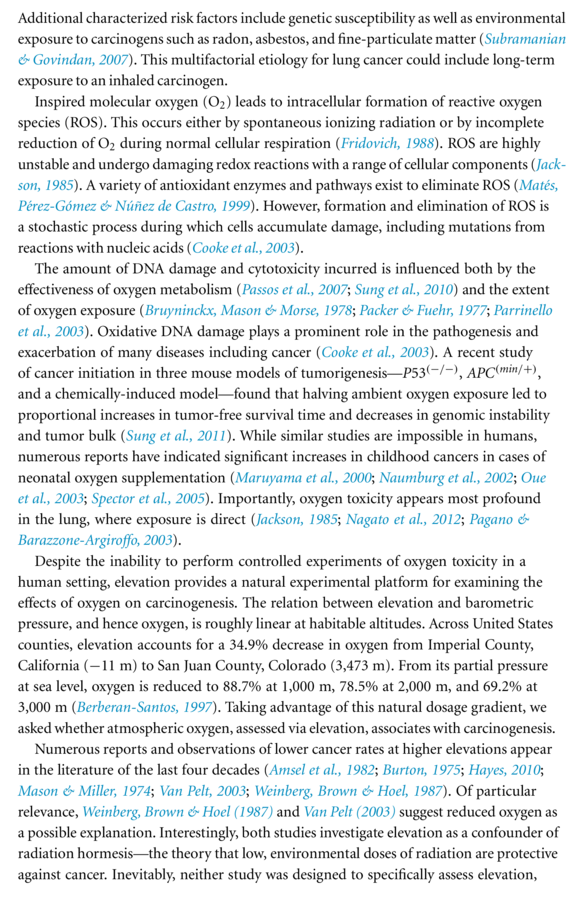
Video Summary by SciShow
Video Summary by DNews

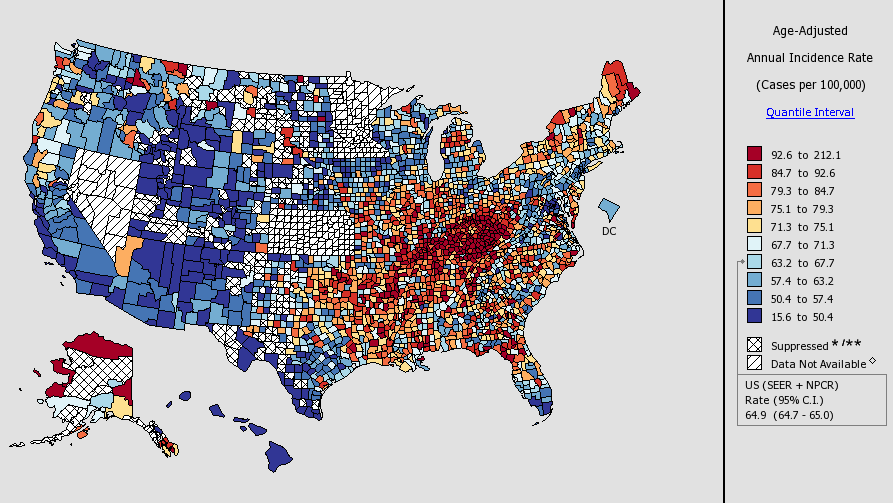
Lung Cancer Rates, 2007–2011
SciShow: Oxygen is Killing You
oxygen-driven tumorigenesis
- Decreasing ambient oxygen inspired by cancer-prone mice doubled time till tumorigenesis and decreased tumor bulk and genomic instability (Sung et al., 2011)
- Increased cancer in cases of neonatal oxygen supplementation (Spector et al., 2005)
- oxygen toxicity appears most profound in the lung (Jackson, 1985)
ODT progenitors:
radiation hormesis skeptics
Clarice Weinberg
- biostatistician
- Radiation Research, 1987
Wesley Van Pelt
- consultant in radiation safety
- Health Physics, 2003


Study Design
- outcomes: lung, breast, colorectal, and prostate
- cancer incidence rather than mortality
- counties were the smallest feasible unit
- why not barometric pressure?
- 100% oxygen at sea level
- 88.7% at 1,000 m
- 78.5% at 2,000 m
- 69.2% at 3,000 m
- population-weighted elevation
- Census blockgroup
- 66.5 blockgroups per county
- 1348.3 persons per blockgroup
- excluded counties with fewer than 10,000 individuals
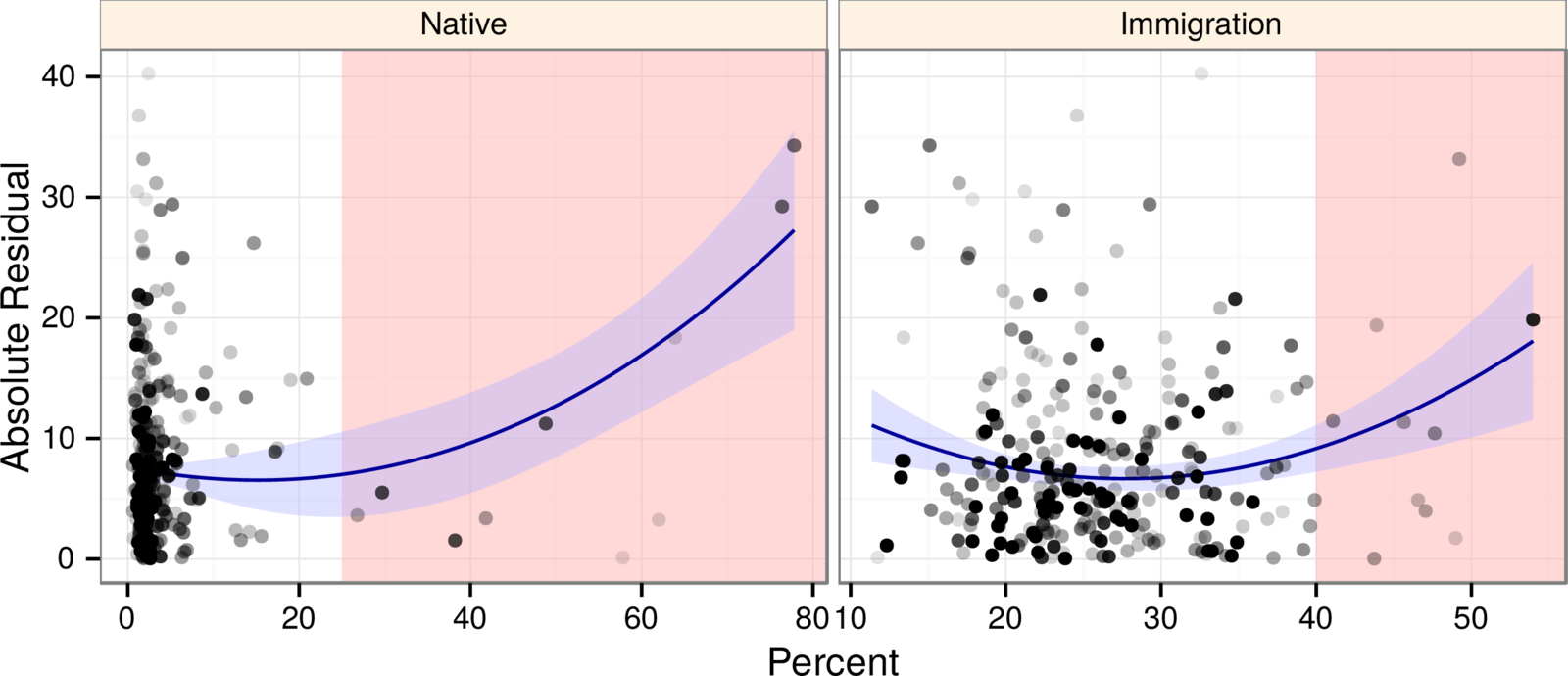
- observations: counties
- outcome: all-site cancer incidence
- predictors: metro, white, black, education, income, obesity, percent male, and smoking
Choosing QC Thresholds using Residuals
Additional Predictors
- minimize confounding effects by adjusting for additional factors
- six general covariates to account for unknown or immeasurable risk factors or biases
- included major cancer-specific risk factors
- omitted redundant variables to reduce collinearity
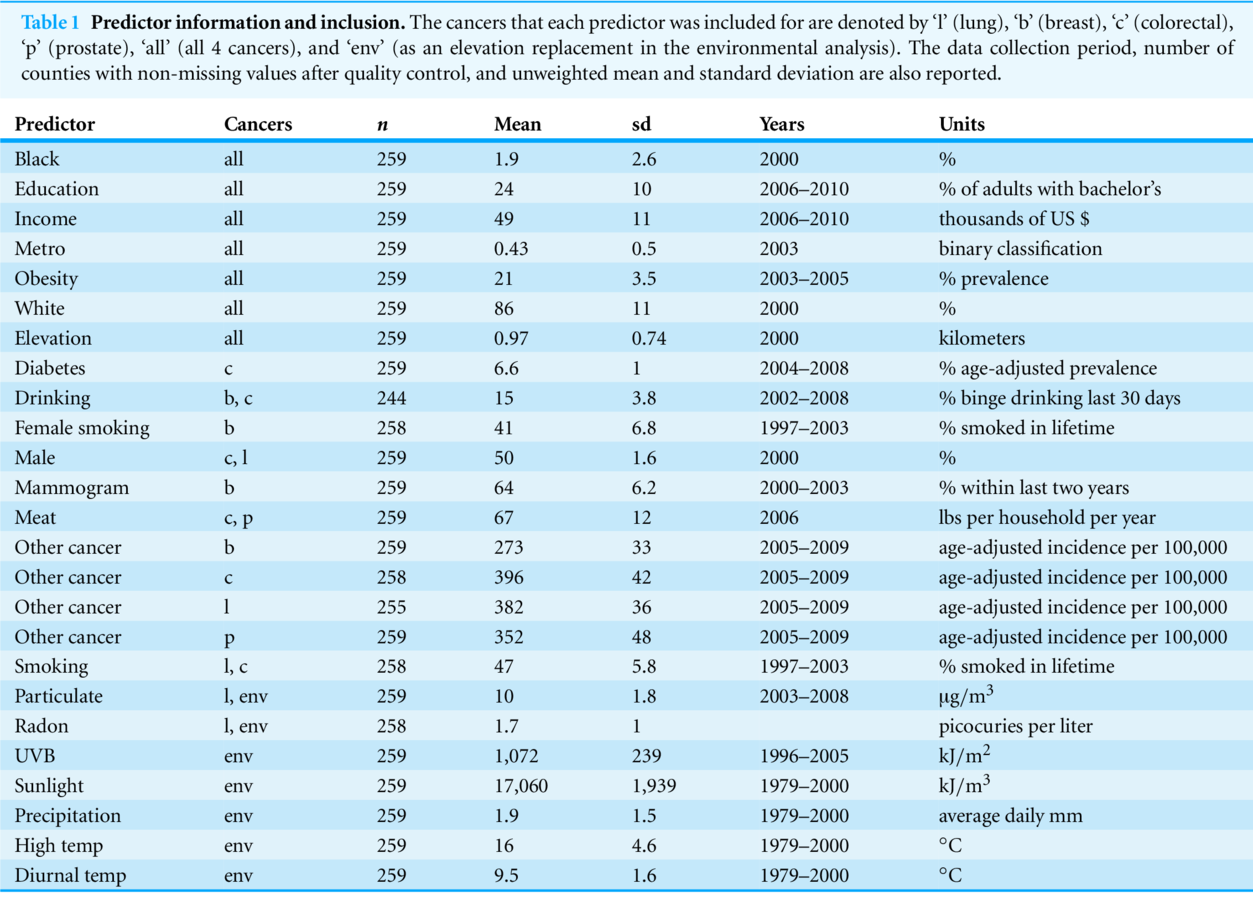

best subset
- evaluates all possible predictor combinations
- advantages:
- forced elevation inclusion
- exhaustive
- range of models (optimal = min BIC)
- defined statistics
- disadvantages:
- overfitting
- collinearity
lasso
- coefficient shrinkage
- variable selection
- regularization parameter optimized with cross-validation
- advantages:
- prevents overfitting
- disadvantages
- limited statistics
weighted regression by county population (squareroot maxed to 250k)
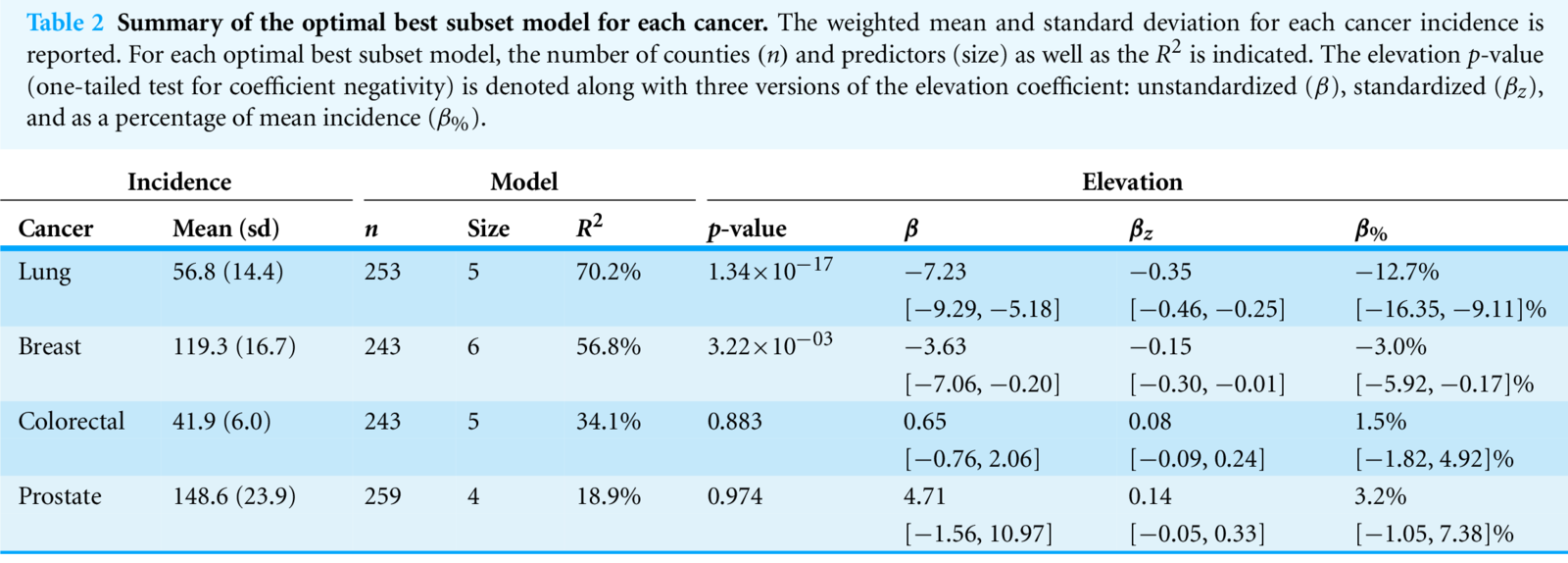
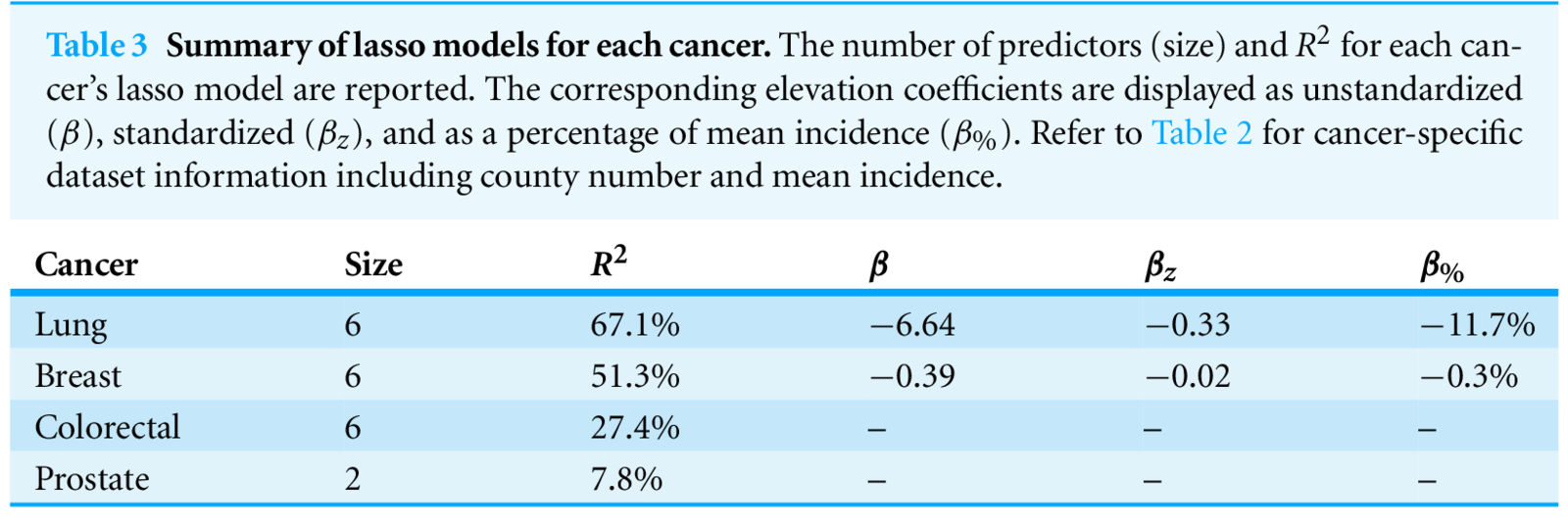
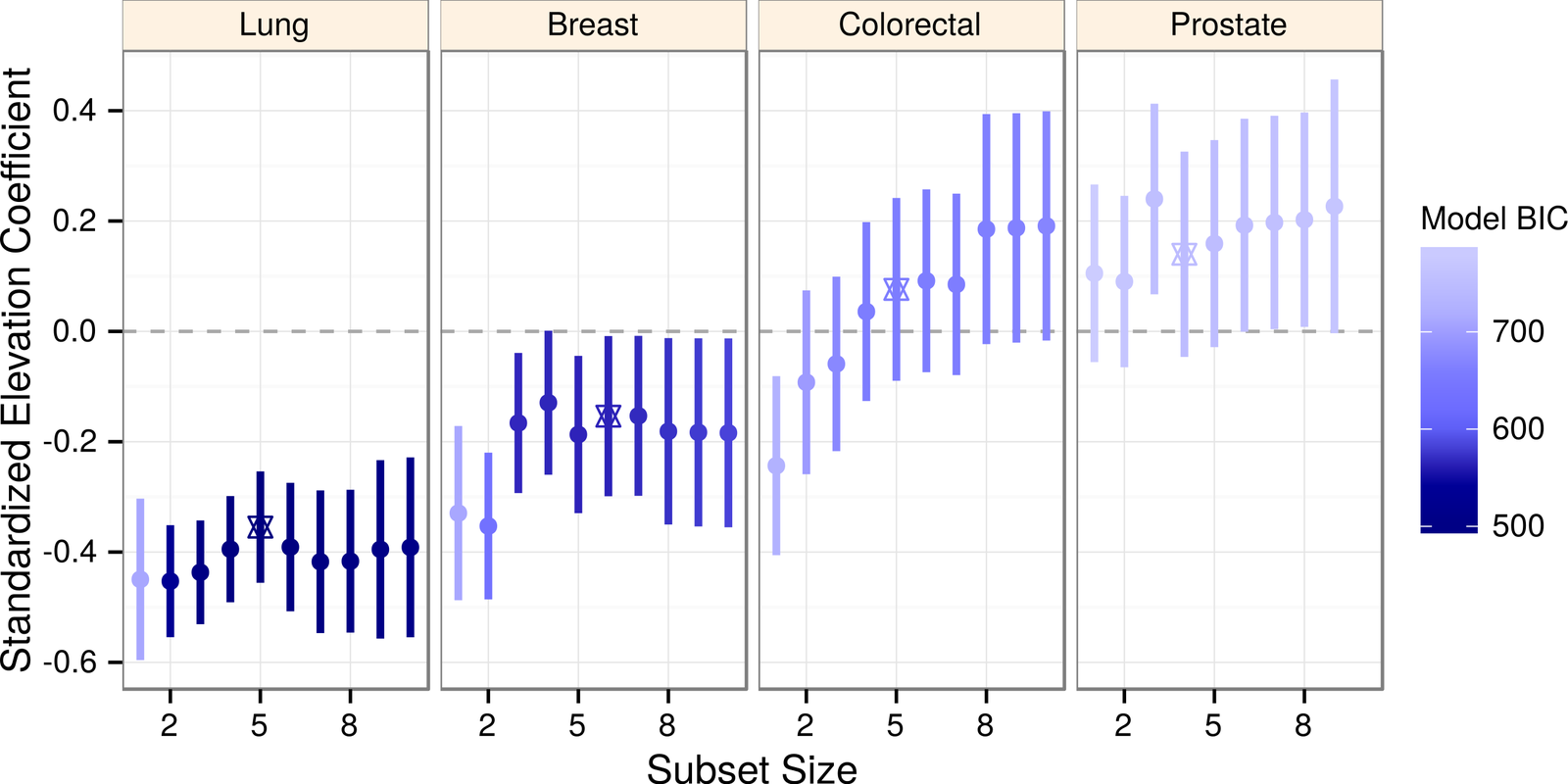
Best Subset Regression
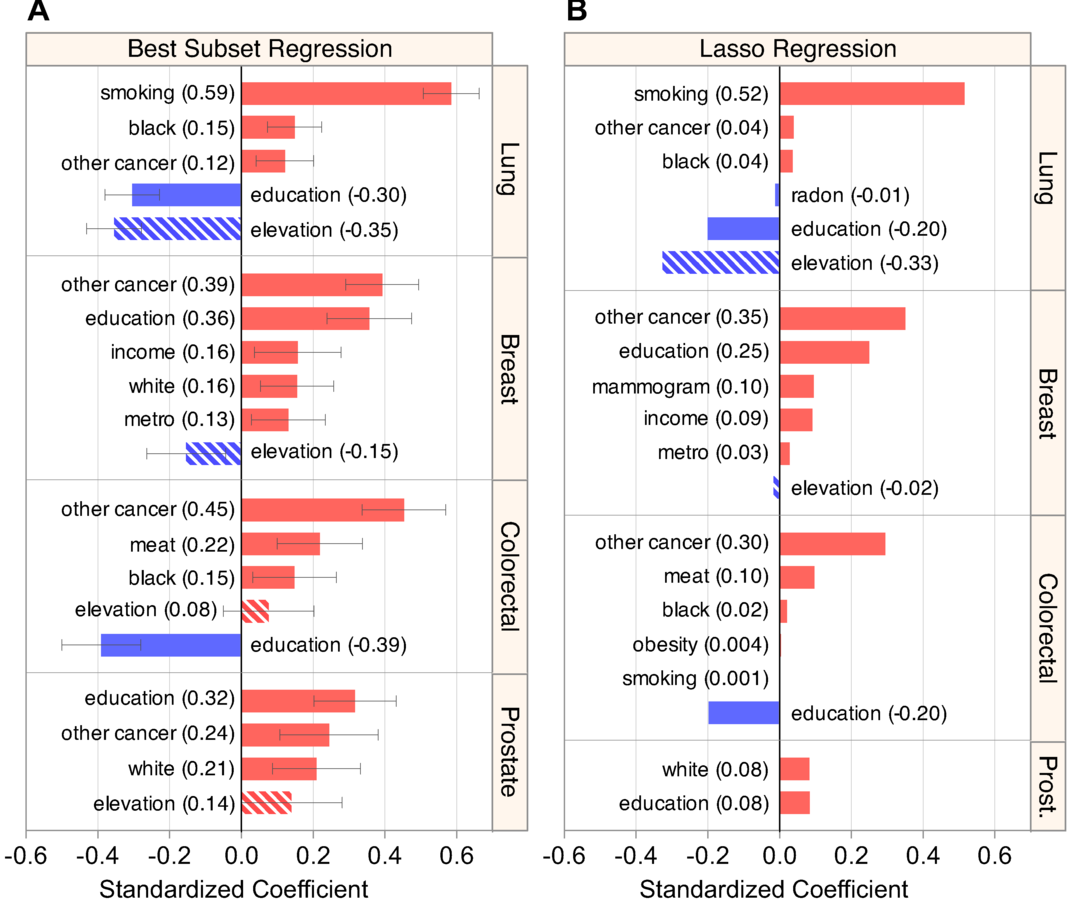
Were the entire United States situated at the elevation of San Juan County, CO (3,473 m), we estimate 65,496 99% CI [46,855–84,136] fewer new lung cancer cases would arise per year (ceteris paribus and assuming 2000-census county-populations).
Lung Cancer versus Elevation
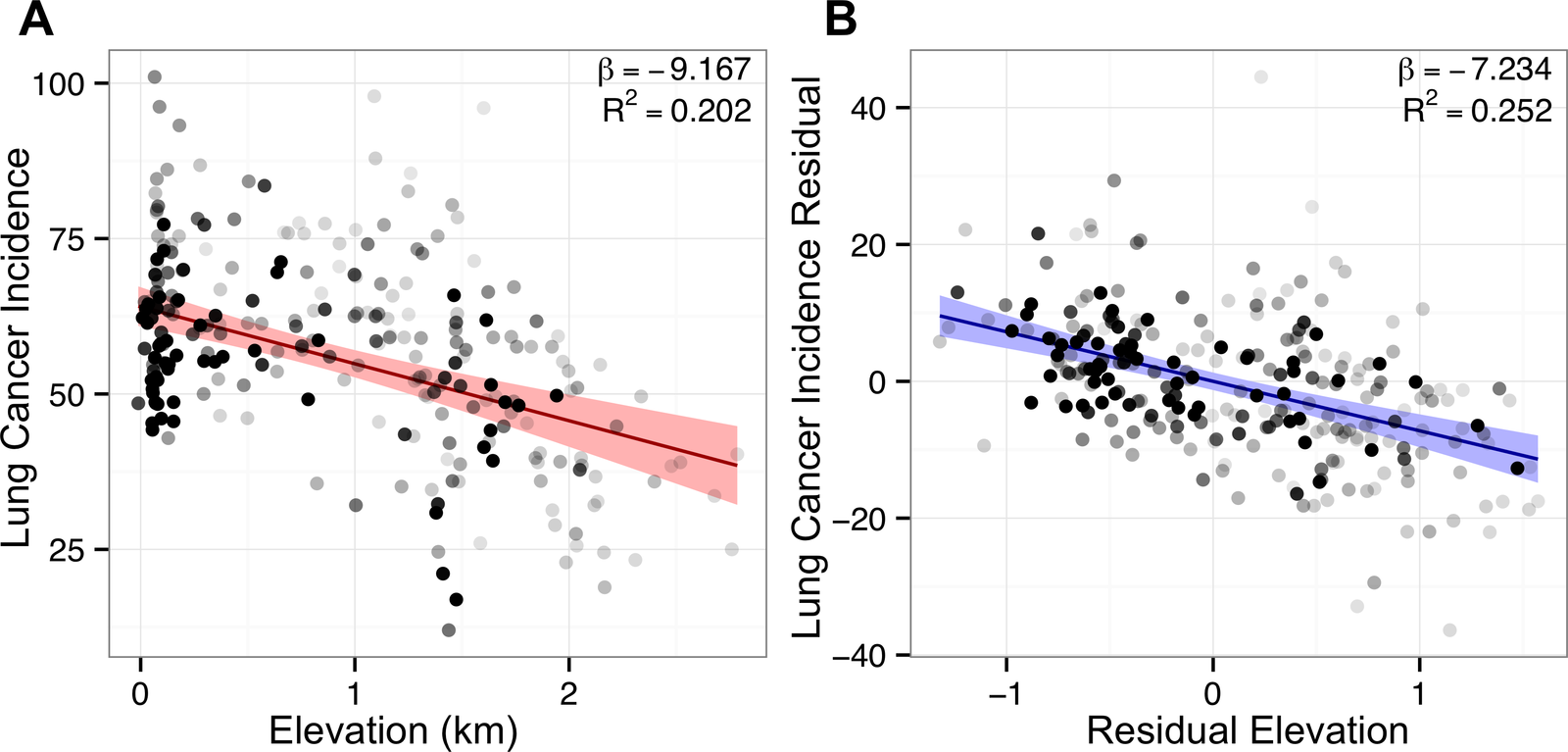
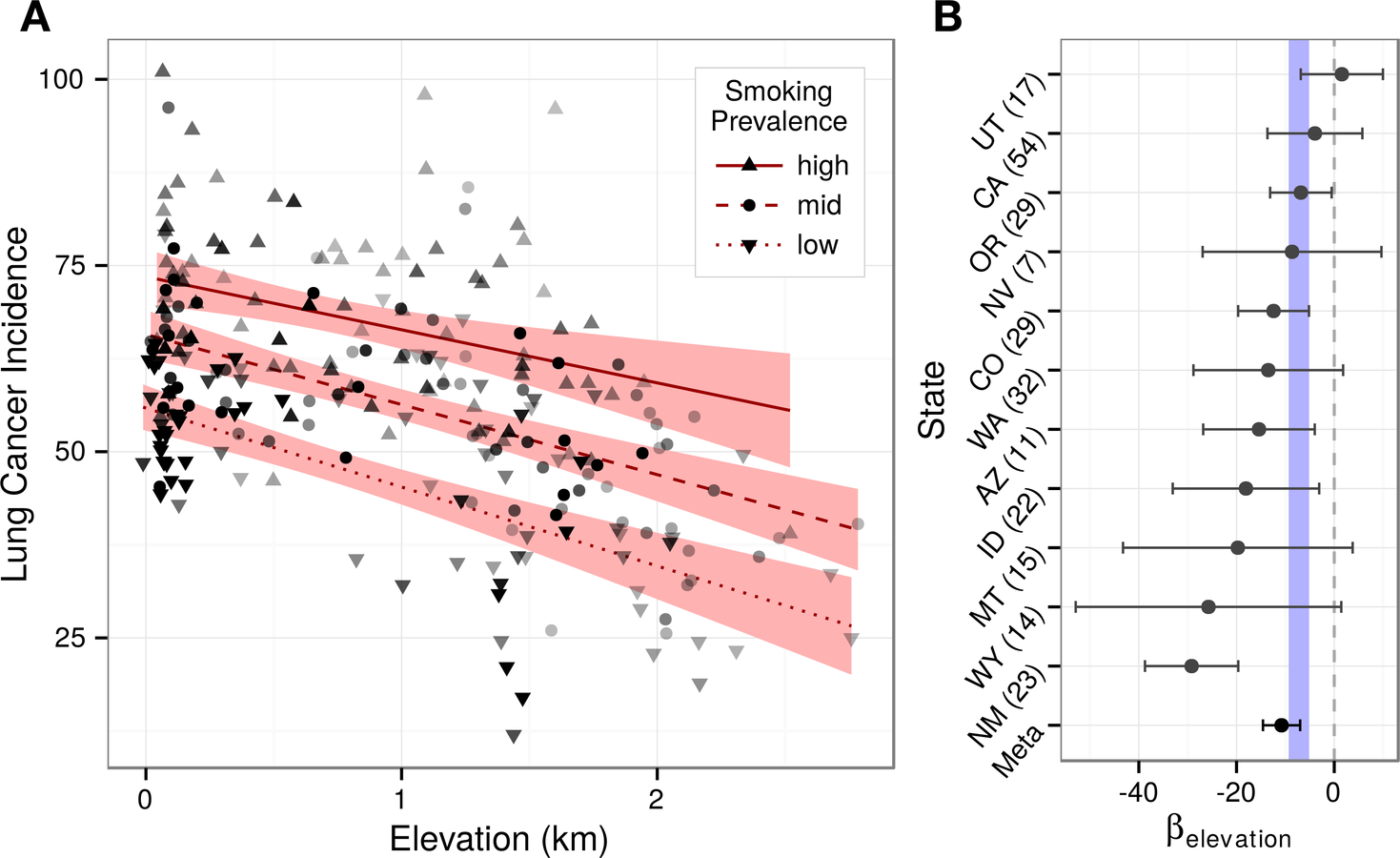
County Stratifications
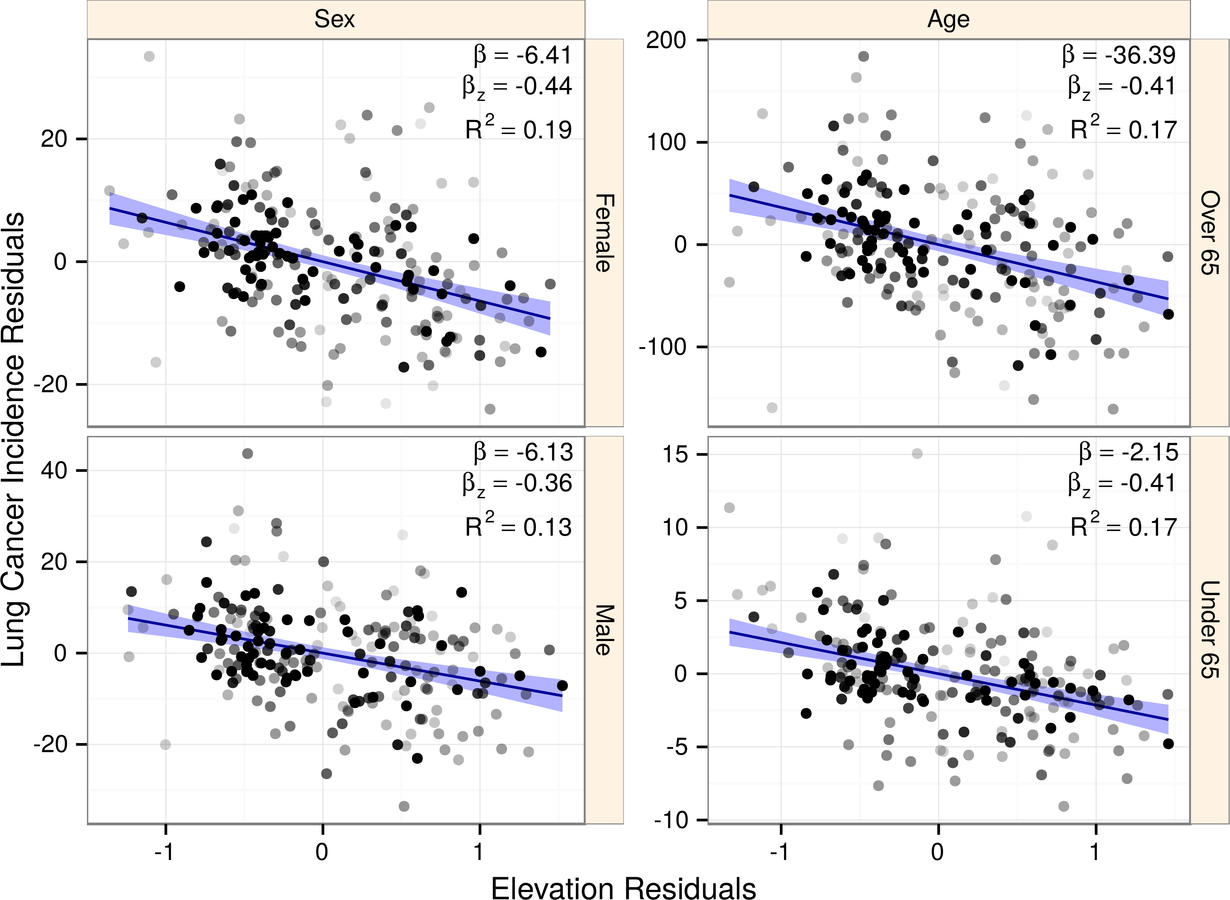
Population Subgroupings
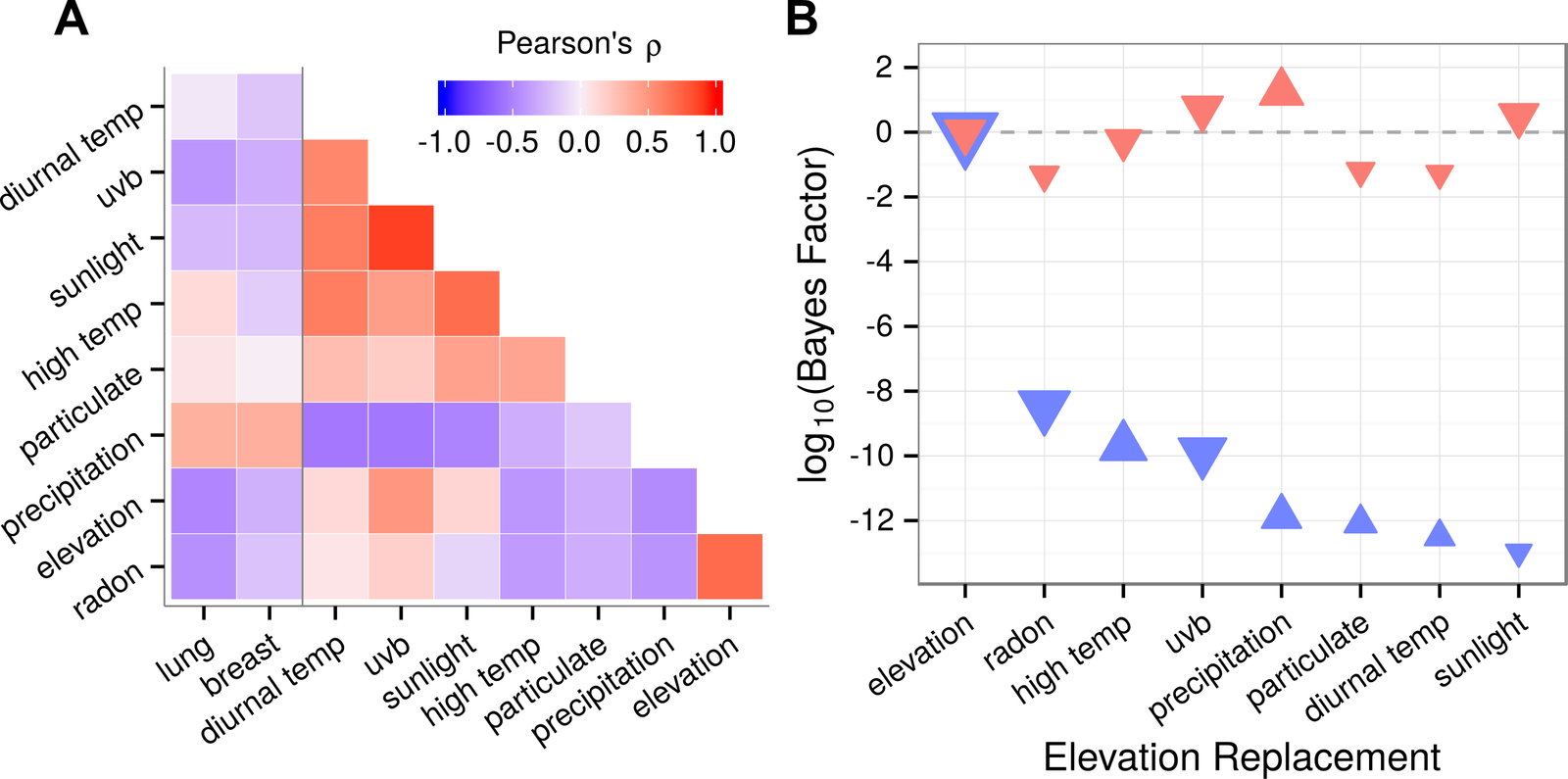
Elevation Replacements
Confounding
- most variables covary with elevation
- omitted-variable bias
- aka uncontrolled confounding
Finally, following previous analyses, we used lung cancer as the indicator of accumulated population exposure to smoking. This adjustment for lung cancer in multivariable regressions may have overadjusted, if altitude has a beneficial effect on lung cancer. (Ezzati et al. 2012)
Lung cancer as a smoking proxy
spurious associations
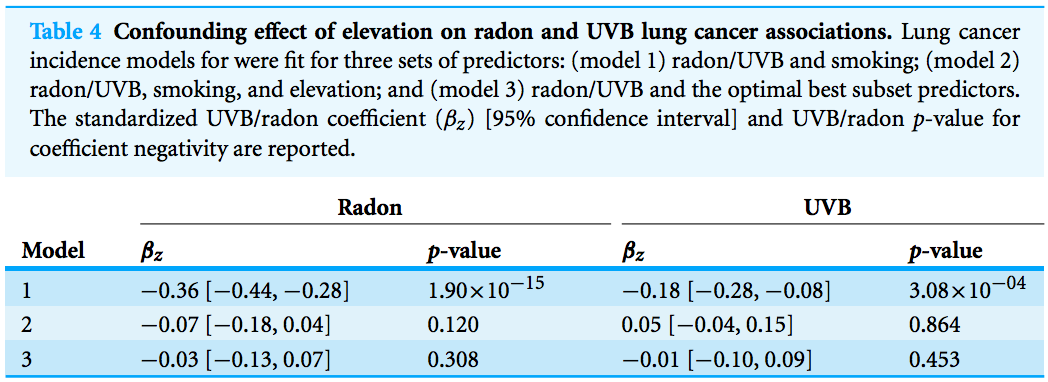
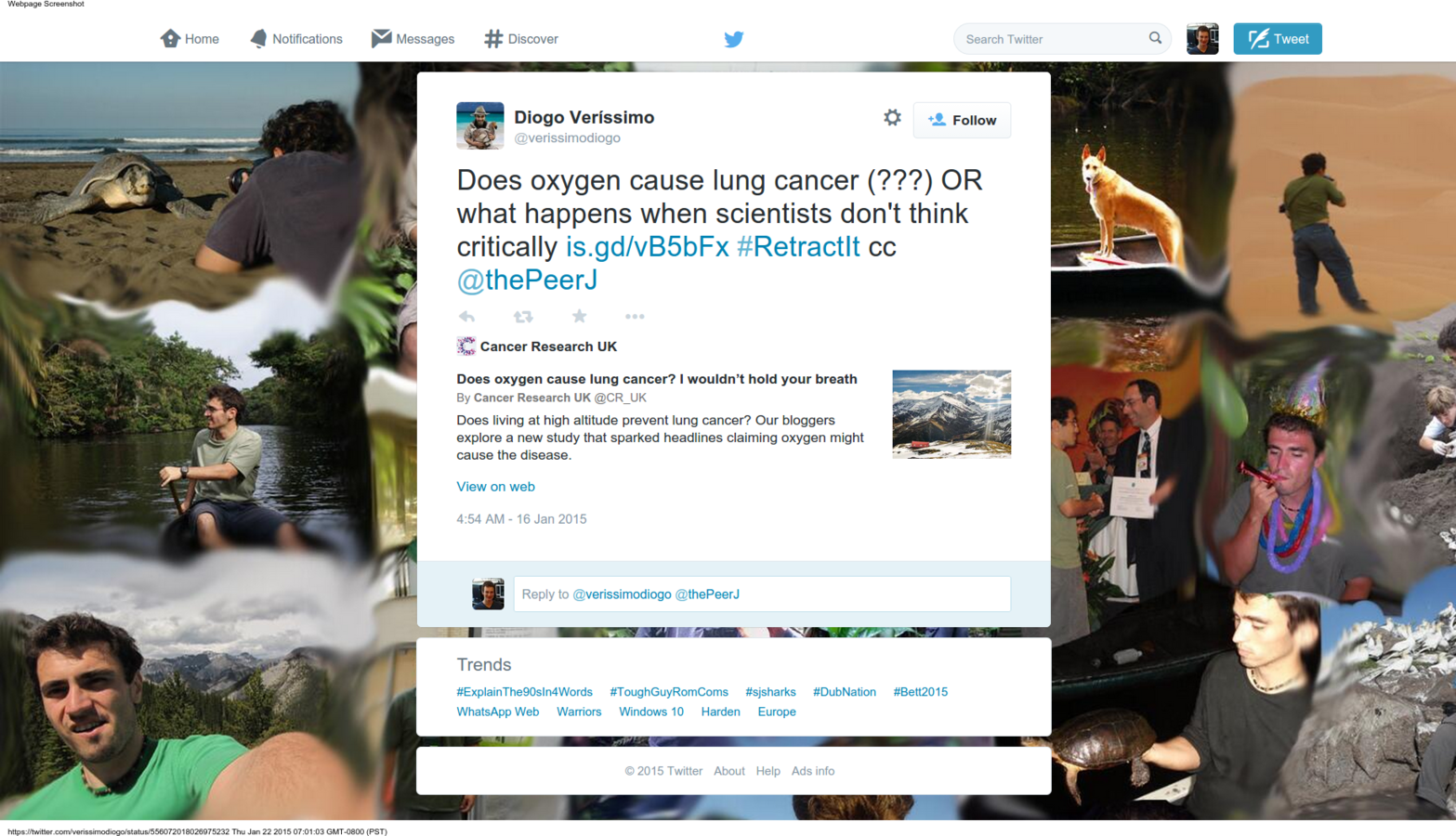
Ed Yong Tweet
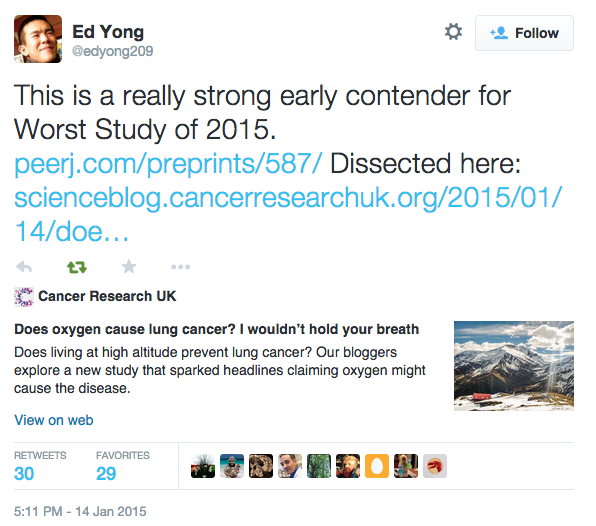
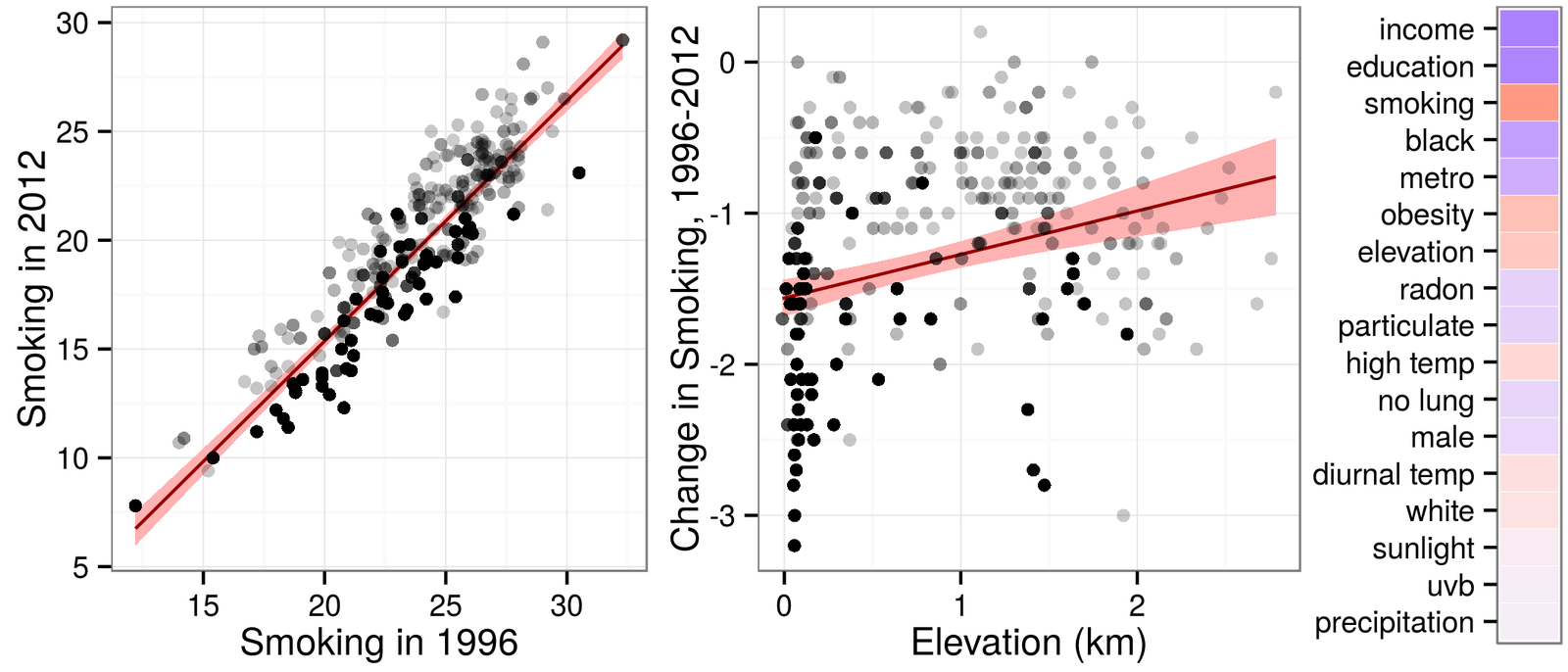
- publicly available data
- PeerJ free publication promotion
- CC-BY (attribution only)
- https://github.com/dhimmel/elevcan